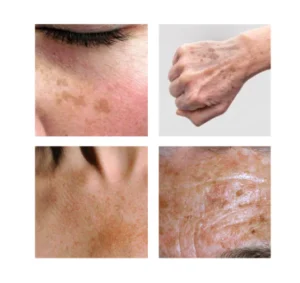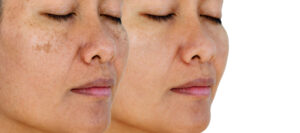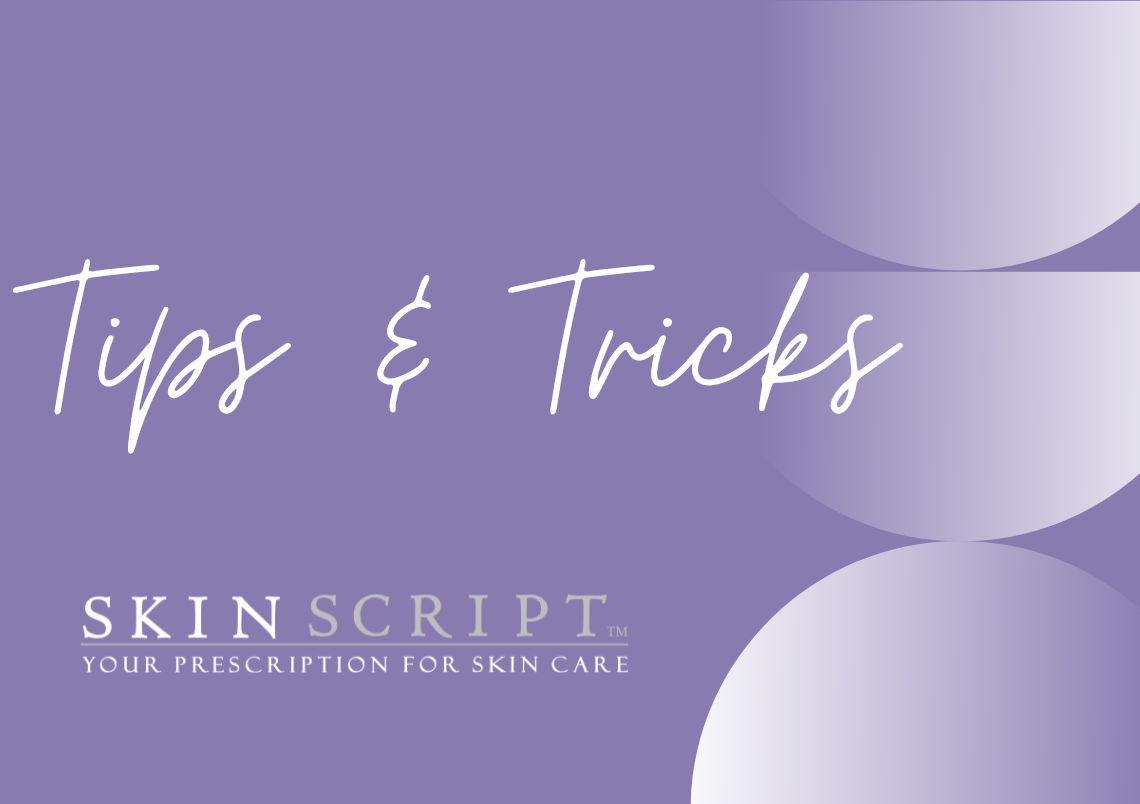Our President and Founder, Lisa VanBockern, joined with our Arizona Educator, Tina Buckley, to offer our Pro’s additional acumens on pigmentation. As professional aestheticians, this is a common concern we hear from our clients. It appears in different forms and it’s important to:
- Recognize the root cause.
- Determine how you are going to treat it.
- Set expectations for improvement.

Let’s dive into the different types of irregular pigmentation. Hyperpigmentation Post-Inflammatory Hyperpigmentation (PIH) is a result from trauma to the skin such as an acne breakout, or an injury to the surface like a cut or scratch. This is normally located within the epidermis effecting the surface and can be treated effectively and successfully with a series of brightening treatments, as well as a consistent home care routine.
Melasma Develops from hormonal changes in our body such as a pregnancy, birth control, hormone replacement therapy or menopause. It presents itself as large, symmetrical patches of pigment with lines of demarcation. Melasma is usually located at our dermal/epidermal junction and the stratum germinativum. It is difficult to treat as it is deeper in the skin near the dermis, and it is hormonally driven. We can successfully treat the melasma but finding the root cause and correcting it (if possible) is the best solution. E.g., after a baby is born, melasma will normally correct with treatments. Discontinuing birth control can help clear up melasma, along with a series of corrective professional treatments and a supportive home care routine. It is important to know that melasma can return during the warmer months due to increased sun exposure as UVR (ultraviolet radiation) stimulates the generation of pigment.
Solar Lentigos
These are UVR induced freckles or dark lesions caused by excess sun exposure. They are common in older adults. Intense Pulsed Light (IPL) works well for Fitzpatrick I-III for freckles; however, the darker lesions in adults may need to be removed using cryotherapy and they do come back. Regular sun protection and homecare that includes tyrosinase inhibitors are critical in the correction and prevention of their formation.
 Once you determine what type of pigment you are working with, talk to your client about what types of treatments would be suitable for their lifestyle. Professional options such as chemical peels, enzymes with acids along with a consistent home care system can be most effective.
Be mindful that each client must qualify for chemical peels. Having an awareness of contraindications can not only address clients concerns but also keep them safe. There are many types of brightening treatments on the market, and they range from mild weekly treatments to more aggressive monthly treatments. Ordinarily, one treatment is not going to remove all the pigment and a series is recommended and often necessary. Set those expectations with your client and remember the cell cycle is 28-30 days, patience is key. If your client cannot have downtime with advanced, aggressive treatments (which are usually available in a med spa), consider weekly treatments.
Lactic acid, mandelic acid and/or brightening enzymes containing kojic acid and arbutin are wonderful for those weekly treatments. Of course, don’t forget that home care is 80% of the results!
In home care, one product typically won’t lift pigment. We recommend the following:
Once you determine what type of pigment you are working with, talk to your client about what types of treatments would be suitable for their lifestyle. Professional options such as chemical peels, enzymes with acids along with a consistent home care system can be most effective.
Be mindful that each client must qualify for chemical peels. Having an awareness of contraindications can not only address clients concerns but also keep them safe. There are many types of brightening treatments on the market, and they range from mild weekly treatments to more aggressive monthly treatments. Ordinarily, one treatment is not going to remove all the pigment and a series is recommended and often necessary. Set those expectations with your client and remember the cell cycle is 28-30 days, patience is key. If your client cannot have downtime with advanced, aggressive treatments (which are usually available in a med spa), consider weekly treatments.
Lactic acid, mandelic acid and/or brightening enzymes containing kojic acid and arbutin are wonderful for those weekly treatments. Of course, don’t forget that home care is 80% of the results!
In home care, one product typically won’t lift pigment. We recommend the following:
- Cleanser – To be used morning and evening.
- Exfoliant – This dives deeper into the epidermis where pigmentation occurs.
- Lightening – Product containing kojic acid, arbutin, azelaic acid and/or licorice root.
- Serum – Treatment serums such as a Vitamin C to influence cellular nutrition.
- Moisturizer – Matched based on skin type.
- SPF – The most important step in preventing pigmentation.
As you can see there isn’t one miracle product that will do everything, it’s a combination of products and ingredients working in synergy. Treating the skin gently on a weekly basis for 6-8 weeks may be the most powerful and most comfortable for your client. A gentle, more progressive approach may be the safest protocol to avoid complications from more aggressive chemical peels and other advanced options. There’s a time and place for each treatment. Skin care customization is critical as each form of irregular pigmentation is unique. With a comprehensive consultation, you can confidently decide what works best for you and your client.
https://www.ascpskincare.com/updates/blog-posts/esty-protocols-improving-irregular-pigmentation



